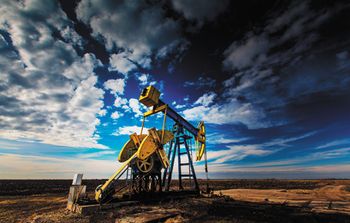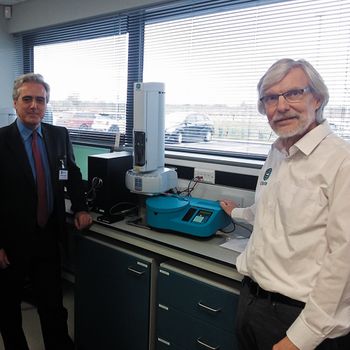
The Column
Lab Innovations has announced that science writer and broadcaster Adam Rutherford will be a keynote speaker at this year’s event held at the NEC in Birmingham, UK.

The Column
Lab Innovations has announced that science writer and broadcaster Adam Rutherford will be a keynote speaker at this year’s event held at the NEC in Birmingham, UK.

The Column
As part of the Earth Day celebration in Dallas, Texas, USA, earlier this year, the Collaborative Laboratories for Environmental Analysis and Remediation (CLEAR) at U.T. Arlington hosted the first annual Responsible Shale Energy Extraction (RSEE) symposium. Even though Kevin Schug and his group have been very involved in this conversation for the past several years, several points stood out.

The Column
Ellutia Chromatography Solutions has opened a new dedicated training centre in Ely, Cambridgeshire, UK.

The Column
Monitoring the endocrine status of marine mammals can give valuable information to researchers. Overall health, health issues, and an animal’s pregnancy status can all be deduced from the careful analysis of steroid hormones. However, gaining such data is not easy. The difficulty of obtaining blood samples in the wild necessitates the use of alternative matrices, such as blubber, that in turn provide a number of analytical challenges. Aiming to solve these issues a team of researchers from the National Institute of Standards and Technology (NIST) have developed a novel method using liquid chromatography tandem mass spectrometry (LC–MS/MS) to analyze blubber obtained through remote sample collection. Ashley Boggs from NIST spoke to The Column about the benefits of this newly developed technique and its potential wider application in animal research and management.

The Column
Researchers from The First Institute of Oceanography in Qingdao, China, have developed an exact mass suspect screening approach for identifying multiple lipophilic marine toxins in seawater, suspended particulate matter (SPM), and marine sediment using LC–TOF-MS.

The Column
Restek has been awarded company of the year by The Pennsylvania/Delaware Chapter of the ESOP Association during its annual conference on 14 September 2017.

The Column
This study describes the gas chromatography–mass spectrometry (GC–MS) analysis of trace-level “air toxics” in humidified cannister air, using cryogen-free preconcentration technology. We show that this method is able to detect 65 target compounds ranging from propene to naphthalene, with method detection limits as low as 0.7 pptv in SIM mode, making it compliant both with standard TO-15 methods, and with “trace TO-15” methods stipulating lower detection limits.

The Column
You don’t have to look far to find headlines such as “PFAS Chemicals in Drinking Water Prompts Restrictions” (1) or “Toxic Algae Discovered in Waterways off Lake Tahoe” (2). These two examples highlight key environmental concerns, and laboratories are feeling the demands to perform more of these tests. The first headline relates to the pollution from per- and polyfluorinated alkyl substances (PFASs) and the latter is attributed to the problems of microcystins and nodularins in water. This article will look into analytical workflows that can be applied to the testing of these “in demand” compounds.

The Column
Click the title above to open The Column October 24, 2017 Europe & Asia issue, Volume 13, Number 15, in an interactive PDF format.

The Column
Click the title above to open The Column October 24, 2017 North American issue, Volume 13, Number 15, in an interactive PDF format.